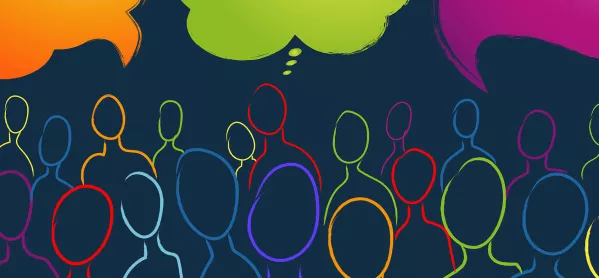Peer learning is happening in your classroom, whether you plan for it or not.
That’s according to two psychologists who have studied the research in this area.
Patrick Leman, dean and professor of psychology at the Institute of Psychiatry, Psychology and Neuroscience at King’s College London, and Dr Harriet Tenenbaum, reader in developmental psychology at the University of Surrey, say that while peer learning can happen in a formalised way, planned into the lesson by the teacher, it can also happen naturally, in a conversation between two or three students.
But how much does peer learning add to a lesson? And how can teachers maximise the benefits?
In this week’s Podagogy podcast Leman and Tenanbaum discuss the findings of a meta-analysis they published in 2020, How effective is peer interaction in facilitating learning?. They found that peer learning can be beneficial for students - and that, actually, when compared with direct one-to-one teaching, the outcomes were the same.
“We think it’s something about having to explain yourself doing the task with another person,” explains Leman. “The important point for teachers, though, is that children working with peers were more effective than children doing the same task individually, which is what is more likely to happen in a classroom.”
Teachers shouldn’t dismiss direct instruction, he stresses, but research shows that, as a follow-up activity, working in a peer group supports children in their understanding.
Listen to more Podagogy podcasts:
The analysis also revealed that there was little difference between the positive impact of pairs versus larger groups of children.
“We didn’t find a statistically significant difference between when children worked with just one other person versus more people. There is this notion that in a group children can coast or there’s always one person who does all the work,” says Tenenbaum.
How teachers can make the most of peer learning
“It’s more complex than that because, yes, there probably is a bit of loafing or coasting in larger groups but that doesn’t mean to say that the loafers or the coasters aren’t picking up something more than they wouldn’t be picking up on their own, or in an hour of interaction. You could also argue that in a larger group there are just more opportunities for the right answer to come out.”
The researchers are aware that some teachers have concerns about classroom management when it comes to peer learning, but Leman points out that behaviour can be a problem at any time.
“Some of the concerns about it, to do with behaviour and to do with it being disruptive… of course, that happens, but that can happen in the more formal chalk and talk teaching environment just as much as it can happen in a peer learning environment where there’s more active hands-on conversation,” he explains.
In this podcast, Leman and Tenenbaum go on to discuss their research in detail, talk about the benefits that peer learning has for academic success, social success and soft skills, and offer support for teachers who want to embed more peer learning into their classrooms.





